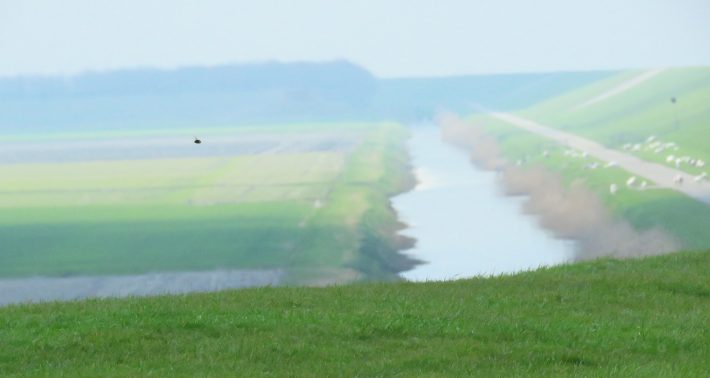Bumblebee queens migrate for hundreds of kilometres
New research shows that bumblebee queens don’t always remain in approximately the same place, as biologists assumed until now, but cover distances up to hundreds of kilometres. Wageningen pollination researcher Thijs Fijen discovered this with the help of alert volunteers. Fijen published his findings in the scientific Journal of Applied Ecology.

This discovery means that measures to protect bumblebees may be less effective than biologists assumed. Since some bumblebee species are reported to exist even in intensively farmed areas, scientists have so far thought that these areas had just enough nature left. Now that it appears the bumblebee queens travel great distances, this could mean that the population in agricultural areas go largely extinct every year, after which new queens invade the area.
Fanatical ornithologists
This migratory behaviour was accidentally noticed by ornithologists counting bird migration. Some of them noticed that there was a significant number of bumblebees passing through and decided to count the buzzing creatures. During a top-day, over 11 thousand bumblebee queens passed a counting station. It is estimated they flew at a velocity of 30 kilometres per hour, and are able to maintain this speed for an entire day.
“Bumblebees do not migrate in groups or flocks as birds do”, Fijen emphasises. “They travel individually.” This explains why biologists have not noticed this behaviour sooner. In the 1950s and 70s, British, French, Swedish and Finnish researchers counted migrating bumblebees. In the Netherlands, volunteers recorded a total of ten such large-scale migration days.
Search for new nesting locations
Only the bumblebee queens survive the winter. What prompts them to migrate in such numbers in the spring is hitherto unknown. Fijen thinks a shortage of nesting locations may be the reason. If there are insufficient suitable spots in nature areas, they search for sites elsewhere, only to find no more than farmland with little biodiversity and scarcity of food and nesting spots. “This is just a hypothesis”, Fijen stresses. “Further research will reveal if this is indeed the reason.”
Conservation measures: more biodiversity
Although there is no precise data on the number of bumblebees in the Netherlands, biologists see the number of bumblebee species decline year upon year. This insight into their migratory behaviour means we must approach their conservation differently. Fijen states:
If bumblebees leave nature reserves in search of new places to settle, we must offer them those
This also means that rural areas in the Netherlands do not offer the bumblebee sufficient space. “At the moment it’s a typical case of trying to empty the ocean with a thimble”, Fijen explains. The nature reserves produce more bumblebee queens, which then disappear in the farming areas. “Simply having more queens in nature areas does not solve the problem. You must prevent the population from disappearing in the rural areas.”
The biologist pleas for more biodiversity, wildflowers and nesting spots for bumblebees. Not just in the Netherlands, but on an international scale. The fact that bumblebees can benefit from such measures rapidly is a distinct advantage. “If we raise the quality and biodiversity of the environment, bumblebees will find their way there, even if it means flying a hundred kilometres’” says Fijen.
Reliability and future
Fijen hopes these new findings will result in more bumblebee counts. Because it is impossible to determine if the bees passing one counting post are the same ones that pass the next post, the biologist wants to use tracking technology. “Unfortunately, we cannot equip the bumblebees with tracking devices”, he says. However, scientists can track insects using radar technology. Fijen hopes to map the bumblebee migration through such research.
You can read the full article for free here:
https://besjournals.onlinelibrary.wiley.com/doi/10.1111/1365-2664.13768
Media contact:
Vincent Koperdraat
E: vincent.koperdraat@wur.nl
T: +31317480954
Like what we stand for?
Support our mission and help develop the next generation of ecologists by donating to the British Ecological Society.